Environmental Integration on ...
Online Conference
10 Apr 2025 / 12 Apr 2025 read more
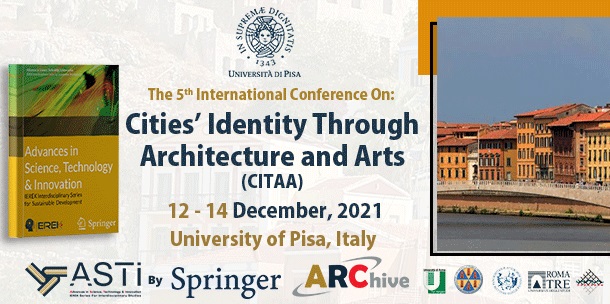
Hisham Hussein
Conference Coordinator
[email protected]
(+20) 3 5763827 | (+20) 3 5763828
(+20)1093188470
IEREK is an official partner of IFGICT membership number AG05082Z18

Prof. Arch. Luca Lanini
Full Professor, PhD
Professor at DESTeC of the University of Pisa in Architectural and Urban Design. Ph.D. President of the Master degree in Building Engineering-Architecture of the University of Pisa.
Subscribe to our newsletter
The fifth edition of the International Conference on “Cities’ Identity Through Architecture and Arts” was held virtually in collaboration with the University of Pisa in Italy on the 13th and 14th of December due to travel restrictions caused by the pandemic.
The Conference discussed several topics regarding different vocabularies, such as sacred architecture, heritage buildings, open spaces, landmarks, street escapes, etc.
The Conference topics attracted scientists, architects, cultural preservation enthusiasts, and researchers to discuss their papers and come up with possible solutions to solve the problems of the identity of cities.
Among the main topics discussed in the Conference:
Day 1:
Welcoming Session:
The Opening Ceremony started with the online registration and welcoming speeches from the Conference Chair and IEREK founder.
A Presentation about IEREK followed, introducing IEREK and its activities to the audience.
Following this introduction, short welcoming speeches were given by the Conference Chair, Professor Luca Lanini, University of Pisa, Architectural and Urban Design, and Prof. Ferdinando Trapani, Professor of Urban Planning, Department of Architecture, University of Palermo; Coordinator of the Italian Academic Alliance with IEREK.
.jpg)
Plenary session:
A plenary session followed, introducing the first keynote speaker, Professor Federico Bilò, Ph.D. (VII cycle), and Associate Professor of Architectural and Urban Design, Faculty of Architecture in Pescara, whose speech was entitled: “Portraying and interpreting the city: two case studies.” Afterwards, the second keynote speaker, Professor Claudia Sansò, Ph.D. in Architectural and Urban Composition at the DiARC, University of Naples Federico II, whose speech was entitled: “Forma Urbis / Imago Urbis. Cities' identity through sacred space,” was introduced.
.jpg)
.jpg)
After the keynote speech, was the First Session of the Conference entitled: “City Formation and Identification.” The session was moderated by Professor Laura Terrone, Architect and Ph.D. student at Sapienza University of Rome; Professor Michele Pellino, Architect and Ph.D. student at Sapienza University of Rome and member of the “StandardF-AU Research Group” of the University of Campania “L. Vanvitelli,” and Professor Giada Bartolini, Ph.D. student in Construction Engineering at the Department of Energy, System, Territory, and Construction Engineering at Pisa University.
.jpg)
Day 2:
The second day of the conference started with the speech of the remaining keynote speaker, Professor Federica Morgia, Architect, Associate Professor, and Ph.D. in Architectural and Urban Design, entitled: “Rome. A Palimpsest of Identities between Past and Future.”
.jpg)
After the keynote speech, the Second Session started and was moderated by Professor Nabil Mohareb, Associate Professor, Department of Architecture, The American University in Cairo (AUC), Egypt, and Professor Nicola Cavalagli, Researcher, PhD. Department of Civil and Environmental Engineering, University of Perugia. The Second Session discussed five presentations before a short break.
.jpg)
Finally, a Discussion and Questions and Answers Sessions followed, and the Conference was concluded by a Panel session, where feedback and final remarks were discussed.
.jpg)
Every city has its valuable and unique identity that is revealed through its physical and visual form. It is seen through the eyes of its residents and users where the collective memories of their residents and users are being shaped. The robust identity of the city comprises the physical spaces and the images that were shaped through clues of memory, which in turn affect the tourism, education level, cultural level & economic prosperity in addition to other aspects.
Cities' identities are constructed and developed over the time, from physical, cultural and sociological perspective the identities are incessantly evolving. This conference will discuss how Architecture and Arts are the embodiment of the historical, cultural, and economical characteristics of the city. It presents how cities' memories play a vital role in protecting the physical and nonphysical heritage of the city. The research presented in this conference will make sense of the transformation of cities and urban cultures, and investigates different new approaches developed in, both, Contemporary Arts and Architecture.
This conference will present how citizens see their cities and how they physically or mentally compare it with the ideal city in their own perceptions. However, a city's identity presents distinguishing factors that make it unique and unlike any other. It covers a huge variety of topics such as the conservation of the cultures and the identity of the city through the designing and planning processes. It discusses the different ideologies, approaches of a more sustainable city, and investigates the different approaches developed in Architecture and Contemporary art.
In this context, IEREK organizes this online conference to discuss several topics regarding different vocabularies. For instance, the sacred architecture, heritage buildings, open spaces, landmarks, the street escapes, etc.; all of them have direct influences at the cities' form. The cities' form also receives the indirect impact from the citizens themselves, such as their culture that accordingly depends on the art, which could be seen and embodied through moral, painting, media, digital art, and sculpture. It then discusses the fundamental elements that have the full resilience and responsibility of the identity of the cities.
This conference also welcomes research papers that includes different case studies that present many solutions of activating the concept of the responsibility of architecture and arts on the development of our cities. It is an important initiative, which presents a new approach that depends on the available features of cities and how planners and decision makers use these resources of the cities' features as the thread tip in solving the urban problems that our cities are facing.
1-1 Cities with Religious and Cultural Theme
1-2 City Structure, Features, and Elements
1-3 The City's Image and Self-Identity
1-4 Transition to Smart and Cities: Structure and Transformation
1-5 Advances in Technologies of City Planning and Development
1-6 Urban Growth, Morphology, and its Impact on Cities Identity
1-7 New Development in Urban Design and Shaping the City and its Culture
1-8 The Influences of City Elements and Vocabularies in the City Form and Development
2-1 Cultural Heritage Protection Conservation and Reuse
2-2 Ideologies and Movements: Shaping the City and its History
2-3 Visuals Arts Role in Documenting Architectural Heritage
2-4 Branding the City Heritage Identities and Sustainable Heritage
2-5 Public Regulations and Efforts in Heritage Conservation
2-6 Mapping Cities Vocabularies: Ecological Approach of Conservation Projects
2-7 The Correlation between Architecture and Arts and Conservation of Cities Vocabularies
2-8 The Role of Heritage Sites in Driving the City Fabrics
3-1 Visuals in Architectural Heritage in Modern Era
3-2 Future of Our Past: Archeology is Yesterday's Visual Arts for today
3-3 Visual Arts Role in Documenting Architectural Heritage
3-4 Art, Music, Interaction Visualization Media and its Impact on Human
3-5 The Dialogue between Ancient and Contemporary Visuals
3-6 Cultural Spaces and Landscapes in Contemporary Arts
3-7 Artistic Heritages and its Impact on Contemporary Arts
3-8 Contemporary Art in Reviving Modern and Historical Cities
4-1 Planning for Sustainable Context of Re-discovering Heritage Vocabularies
4-2 The Future of Cities Art, Architecture, and Historical Cities
4-3 Architecture and Arts in Cultural Transformation Age
4-4 Shaping and Transformation of Successful Case Studies
4-5 Policies and Guidelines for Planning and Transformation of Cities
4-6 Best Practices for Dealing with Historical Areas and Buildings
4-7 Historic Conservation and Economic Plans for Sustainable Tourism
4-8 Cultural Spaces Development and Landscapes in Contemporary Arts
| Title | Date |
|---|---|
| Abstract Submissions Deadline | 15 Sep 2021 |
| Last Notification for Abstract Acceptance | 25 Sep 2021 |
| Full Paper Submission Deadline | 11 Nov 2021 |
| Last Notification for Full-Paper Acceptance | 01 Dec 2021 |
| Early Payment Deadline | 12 Nov 2021 |
| Regular Payment Deadline | 12 Nov 2021 |
| Late Payment Deadline | 14 Dec 2021 |
| Letter of Visa (for delegates who need visa entry) | 14 Sep 2021 |
| Letter of Final Acceptance | 01 Dec 2021 |
| Conference Program | 01 Dec 2021 |
| Conference Launch | 12 Dec 2021 |
Instructions
- Each research paper should have one main author who should pay the full fee (Author fees) regardless of attendance.
- Each co-author (1-5 max) has his/her own separate fees to pay as shown in the table below.
- A research paper fee allows only one author, whether main or co-author, to attend the conference and receive only one copy of the conference Abstract book in both hard and soft copies. Extras can be requested for a fee shown below.
Loyalty Membership Discounts
The more you attend, the more you're rewarded!
IEREK offers its loyal participants the following discounts depending on his/her attendance:
|
Attendance |
Second |
Third |
Fourth |
Fifth |
|
Discount |
5% |
10% |
15% |
20% |
Conference Fees:
Covid-19 Conference attendance Fees: Held online from the comfort of your own home, the fees below guarantee your virtual attendance for all days of the conference date above.
|
Non-UniPi Participant Fees |
|
|---|---|
|
Author fees *Applicable to non-UniPi participants. *Covers paper submission processing fees, consideration for publication, virtual attendance, and virtual social program. |
EUR 250 |
|
Attendance Fees (Co-authors & Audience Members) *Covers virtual attendance, virtual social program, and contribution certificate. |
EUR 50 |
|
UniPi Participant Fees |
|
|
Author fees *20% Discount ONLY applicable to UniPi faculty members and staff. |
EUR 200 |
|
Attendance Fees |
FREE |
|
Co-Author Fees *Attending and non-attending. Covers inclusion in abstracts book, publication upon approval, and contribution certificate. |
EUR 50 |
|
Extra Fees |
|
|
Authors may request that their kits be delivered, for an additional fee decided by the courier, and upon request. Alternatively, authors located in Egypt can pick them up from Cairo/ Alexandria office. |
|
| Shipping Fees for Conference Abstract book and certificate (Depends on Location) | Contact Us |
| Additional Conference Kit (Excluding Delivery) | EUR 100 |
| Author & Audience additional fees (Physical Attendance -TBA) | EUR 150 |
Important Note:
IEREK has an unyielding policy regarding plagiarism. We believe that copying/taking the ideas and work of other Authors without permission and credit is fraudulent. The Reviewing committee and IEREK employees have the authority to reject a paper during its reviewing process, on the basis of the paper being subjected to either minor or major plagiarism.Authors must refer to, and abide by, the following instructions in submitting their abstracts/ papers:
- The author should prepare and submit an Abstract (250 300 words) through the website and before the abstract submission deadline.
- The abstract should clearly state the purpose, results, and conclusions of the work to be described in the final paper.
- The author should select the most relevant topic for the paper from the corresponding conference topics.
- The author can use/download an abstract writing template to submit the abstract file accordingly.
To download the Abstract Writing Template, Click Here
- Upon submission, an abstract will undergo a preliminary evaluation process by members of our scientific committee.
-A relevant topic of the conference should be proposed with clear writing, aims, and objectives of the study clearly presented and sound literature and methodology of the work.
- The author will receive a notification by email, within 2 weeks, of:
There are 2 types of paper submission at this conference:
Short Paper:
- A short paper submission consists of 4–5 pages and suits researches that make significant contributions, but still in progress or can be reported briefly.
- The structure of a short paper should contain its abstract, keywords, introduction, problem statements, and the hypothetical solution along with further studies that they will go through when they want to extend their paper to be published online.
- A short paper is only included in the conference Abstracts book and will not have a chance to be published online by Springer or by IEREK’s Journals unless the author extends their work to a full-length paper and pay the corresponding fee.
Full-Length Paper:
- The Full/ Long paper submission is 8 – 12+ pages in length.
- The full paper should state the major issue(s) addressed, the potential significance of the work, the theoretical and methodological approach(es) pursued, major findings, conclusions, implications, and relevant scholarly references.
- A full/long paper will be included in the conference abstracts book as well as get published online by Springer or by IEREK PRESS Journals.
- The author should submit the full/short paper written on the writing template, through our online system before the paper submission deadline.
- The full/short paper should be written in English as it's the official language of the conference.
All Chapters will be screened for similarity using iThenticate; a Turnitin Plagiarism detection software, used for academic publishers. Springer Similarity guidelines are as follows:
To download Paper Writing Template, Click Here
Once Preliminary approval for presentation at the conference and/or consideration for publication is granted, authors will be expected to complete payment in reference to the Conference Fees.
Note:
In this phase of revision, the research paper will be evaluated based on its originality, structure, and relativity to the conference theme. If the paper gets acceptance by one reviewer, a paper preliminary acceptance notification will be sent to the author accordingly.
- As soon as payment is confirmed and done successfully, corresponding official documents can be issued from our end such as:
Only after payment is confirmed,
- and the full paper submission deadline is reached, a submitted full-length paper is assigned to an Editor from the Editorial Board, in alignment with IEREK’s revision SOP (double-blind process).
- Each paper/ chapter is evaluated by a minimum of two reviewers, after which a final decision by the responsible Editor is made. There is no maximum to the number of times a paper can be reviewed, depending on the quality of the submission.
- Once a decision is made by the Editors, IEREK Editors will communicate one of the following three final decisions:
- If modifications are in order, authors will be sent the relevant instructions and a deadline will be set. Missed deadlines may result in complete exclusion from the final publication/ final rejection.
- A back and forth process, modifications will be sent back to the responsible Editor/ Series Editor and another round of evaluation conducted.
Publishing in ASTI by Springer (Scopus indexed) 
After the conference, the submitted manuscripts of authors interested in publishing in the ASTI book series will undergo a rigorous peer review process resulting in a final decision made by the editors. Only accepted research will be published as a chapter in the Book Series entitled “Advances in Science, Technology and Innovation” (ASTI) by Springer. The ASTI Book Series is by managed highly professional members of an International Editorial Board to ensure high-quality material for online publication.
The ASTI Book Series is fully indexed in Scopus. Some titles have been successfully indexed or submitted for indexation in Web of Science (ISI).
 |
 |
 |
 |
 |
About the ASTI series
Advances in Science, Technology & Innovation (ASTI) is a series of peer-reviewed books based on important emerging research that redefines the current disciplinary boundaries in science, technology and innovation (STI) in order to develop integrated concepts for sustainable development. It not only discusses the progress made towards securing more resources, allocating smarter solutions, and rebalancing the relationship between nature and people, but also provides in-depth insights from comprehensive research that addresses the 17 sustainable development goals (SDGs) as set out by the UN for 2030.
The series draws on the best research papers from various IEREK and other international conferences to promote the creation and development of viable solutions for a sustainable future and a positive societal transformation with the help of integrated and innovative science-based approaches. Including interdisciplinary contributions, it presents innovative approaches and highlights how they can best support both economic and sustainable development, through better use of data, more effective institutions, and global, local and individual action, for the welfare of all societies.
The series particularly features conceptual and empirical contributions from various interrelated fields of science, technology and innovation, with an emphasis on digital transformation, that focus on providing practical solutions to ensure food, water and energy security to achieve the SDGs. It also presents new case studies offering concrete examples of how to resolve sustainable urbanization and environmental issues in different regions of the world.
The series is intended for professionals in research and teaching, consultancies and industry, and government and international organizations. Published in collaboration with IEREK, the Springer ASTI series will acquaint readers with essential new studies in STI for sustainable development.
About Springer:
Springer is a leading global scientific, technical and medical portfolio, providing researchers in academia, scientific institutions and corporate R&D departments with quality content through innovative information, products and services. Springer has one of the strongest STM and HSS eBook collections and archives, as well as a comprehensive range of hybrid and open access journals. Springer is part of Springer Nature, a global publisher that serves and supports the research community. Springer Nature aims to advance discovery by publishing robust and insightful science, supporting the development of new areas of research and making ideas and knowledge accessible around the world. As part of Springer Nature, Springer sits alongside other trusted brands like Nature Research, BioMed Central, and Palgrave Macmillan.
Click on the below image to learn more about the editors
Publishing in ARChive by IEREK Press 
ARChive is an open access journal that publishes conference proceedings in a wide range of topics and across all scientific disciplines, from Sciences, Engineering and Technology to Environment, Energy and Earth Sciences. Consequently, it accepts original research papers in a wide spectrum of subjects. ARChive is a journal published on behalf of researchers that perpetually make an effort to contribute to their fields and provides them with a high visibility of research submitted. The series publishes, both, theoretical and experimental high quality papers of current and perpetual interest. It serves to cultivate, propagate, and essentially archive academic research that has been authored and submitted for academic conferences.
ARChive welcomes diverse approaches to innovative ideas that could potentially be a breakthrough in a particular field of study. To provide permanent archiving, ARChive is archived in the collaborative digital preservation archiving systems in LOCKSS, as they provide access to permanent and authorized digital content for electronic scholarly journals.
In accordance with the definition of open access journal provided by BOAI, ARChive is a model of the fully open journal that allows global open access to its content which is freely available without charge to users and institutions. They are allowed to read, download, copy, distribute, print, search, or link to the full texts of the articles, or use them for any other lawful purpose for non-commercial use, without asking prior permission from the publisher or the author.
Attending a conference dramatically enhances both your professional and personal development. They help you sharpen the saw, meet and converse with industry experts, expand your resources and grow your professional network. IEREK Conference will help you:
1. Open Discussions: We bring together leading academic scientists, from different universities and countries, to exchange and share their experiences and research results.
2. Internationally Accredited Certificate: The participants are granted internationally recognized certificates acknowledged by IEREK, the University, and Partnering Organizations.
3. Publication: Selected high-quality manuscripts will be published, after peer review, in the Advances in Science, Technology & Innovation (ASTI) book series by Springer or by IEREK Press Journals, both of which are indexed in world-renowned databases.
4. Research Technologies: Conferences can expand your resources by providing a great opportunity to promote gathered information on new technologies related to your research.
5. Networking: You can engage with industry experts to discuss with them the very latest research projects they could be working on and increase your chances of collaboration in future projects.
6. Academic Reputation: Attending many conferences will make you a known figure in academic circles and an active member of the academic community.
7. Conference Abstracts Material: Delegates will receive the conference Abstracts book in both hardcover and digital format on a CD. Shipping fees may apply.
Delegates in any event who cancel their registration due to special circumstances will receive refunds according to the following:
| Cancellation Policy | Up to 60 days before the event | 59 days before the event |
| Penalty | 20% | 100% |
A refund is not possible if
- An acceptance letter has been issued (Authors only)
- The proceedings of the event have been published (Authors only)
- A submitted manuscript is rejected by the editorial board after going through peer review.
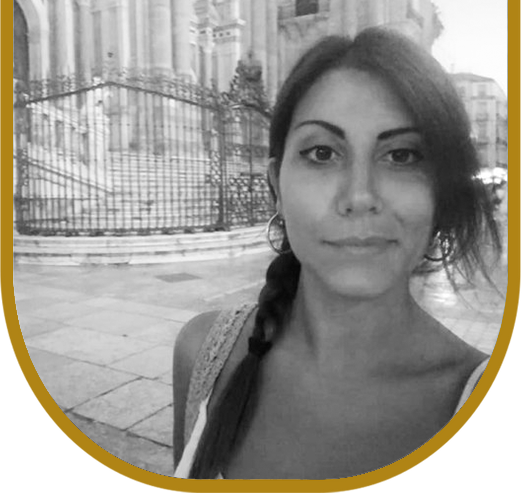
Claudia Sansò, PhD in Architectural and Urban Composition at the DiARC, University of Naples “Federico II”. She has been visiting researcher at the IUACC_Instituto Universitario de Arquitectura y Ciencias de la Construcción of the ETSA_Escuela Técnica Superior de Arquitectura de Sevilla and research fellow at the University of Naples “Federico II”. She has held classes on Islamic Architecture and on Collage and Montage for Architectural Design at the DiARC, University of Naples “Federico II”. She has participated in international conferences and edited several books including Ventuno domande a Renato Rizzi, Clean, Napoli (2020); Fernand Pouillon. Costruzione, Città, Paesaggio. Viaggio in Italia, Aión, Firenze (2019); Adecuación del Castillo del Cerrillo de los Moros. Architettura tra traccia e memoria. Linazasaro & Sanchez, Clean, Napoli (2017). She is the author of the book La moschea e l'Occidente. Tipi architettonici e forme urbane, Accademia University Press, Turin 2020 and César Portela. Estremo Atlantico, Clean, Napoli (2021).
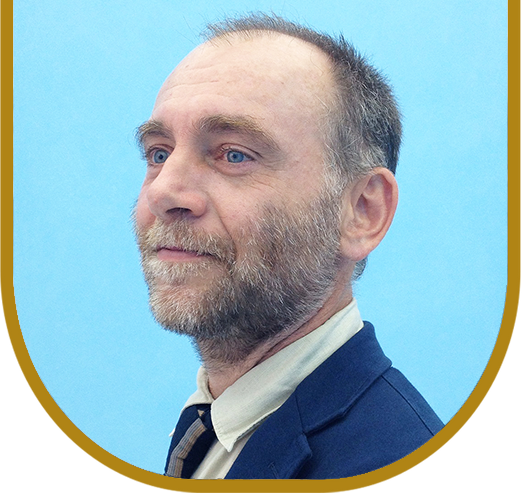
Federico Bilò (1965) earned his degree in Architecture in Rome in 1990, under the tutelage of Costantino Dardi. He holds a PhD (VII cycle) and is Associate Professor of Architectural and Urban Design with the Faculty of Architecture in Pescara. During the 1990s he studied the work of Team 10, the hybrid landscape of Adriatic coastal urbanisation and various aspects of the work of Costantino Dardi. Beginning in 2001 he turned his attention to Dutch and Brazilian architecture, the actions of Adriano Olivetti and, above all, the work of Giancarlo De Carlo. He is the author of: Mecanoo (Rome 2003); Figura, sfondo, schemi configurazionali. Due saggi sull'architettura di Costantino Dardi (Rome 2012); Tessiture dello spazio. Tre progetti di Giancarlo De Carlo del 1961 (Macerata 2014); Matera e Adriano Olivetti. Testimonianze su un’idea per il riscatto del Mezzogiorno (Rome 2016); Le indagini etnografiche di Pagano (Siracusa, 2019); RO>PE -derive- PE>RO (Melfi, 2021). He is the editor of: Rem Koolhaas – Bigness, progetto e complessità artificiale (Rome 2004); A partire da Giancarlo De Carlo (Rome 2007); Letture Incrociate. C’è qualcosa di nuovamente attuale nel progetto culturale della Tendenza? (Rome 2015); Ordinariness. Progetto e quotidiano, (Trento 2015) a monographic issue (29/30) of "PPC- Piano Progetto Città". He was co-curator of the section dedicated to Adriano Olivetti in the Padiglione Italia at the 13th International Architecture Exhibition at the Venice Biennale in 2012. In 1992 he was one of the founding partners of GAP AA in Rome, the professional practice where he has developed the majority of his design work. In addition to various residential interventions, the office’s projects include the transformation of an apartment block in the Murattiano district of Bari (2000/03), the community centre-school in a favela of São Paolo (2003/05), the refurbishment of the Laterza Bookstore in Bari (2006), the restoration of a wing of the Castle in Acquaviva delle Fonti (2006/09), the gymnastics park in Civitella Casanova (2010/12) and the renovation of a private home on the dunes of Sabaudia (2011/13). The office’s work was presented in: GAP architetti associati 1993-2008 (Rome 2010); GAP architetti associati. Made in Italy (Pescara 2015).
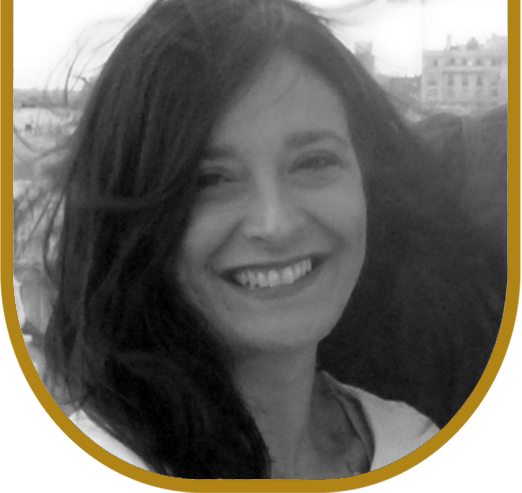
Federica Morgia architect, Associate Professor and Phd in Architectural and Urban Design. She currently teaches Architectural and Urban Design at Sapienza University of Rome, and is a member of the Teaching Committee of the Landscape and Environment Doctorate and the International Erasmus Mundus Joint Master’s in Architecture Landscape Archaeology at the same university. She is a professor in the Network Designing Heritage Tourism Landscapes, IUAV University of Venice and is involved in architecture, cultural heritage development and the design of walkable cities and accessible mobility. Her projects and works with Officina 5 Architetti Associati have been published in international journals and have won prizes in numerous competitions and exhibitions: New IUAV Headquarters, Nuova sede ASI with Enric Miralles, Prototipo per Scuola Mobile in Argentina, Parco della Memoria in San Giuliano and Padiglione Italia EXPO 2015. She has organized and participated in conferences and seminars on the themes of emergency and reconstruction and the enhancement of the landscape and open space. Her works and projects have been shown in numerous exhibitions. Her most significant publications include: Catastrofe: istruzioni per uso (2007), Enric Miralles Benedetta Tagliabue (2010), Atlante dei paesaggi archeologici (2014), Molto piccolo piuttosto grande (2015) and Stili di vita e città del futuro (2020).

Architect, PhD student at Sapienza University of Rome. Graduated with honors in 2018, he studied at the Università of Campania “L. Vanvitelli”, the San Pablo CEU University of Madrid and the Idis Foundation-Città della Scienza of Naples. He has been involved in national and international projects, some of which carried out with Francisco Mangado. He is a member of the StandardF-AU Research Group of the University of Campania “L. Vanvitelli” and his currently activities focuses on the compositional procedures of overlapping the horizontal planes.

Dr. Nabil Mohareb is currently an Associate Professor at the American University in Cairo, Department of Architecture, School of Sciences and Engineering (SSE). He was the former Director of Faculty of Architecture – Design & Built Environment, Beirut Arab University (BAU), Tripoli Campus, Lebanon. Dr. Mohareb has worked for distinguished universities in Egypt, United Arab Emirates, and Lebanon. His research focuses on the social behavior activities, their mutual effect on both spatial and economic variables in urban spaces, and their interrelationship with architectural design.

Laura Terrone is an architect and a PhD student at Sapienza University of Rome. After the graduation with honors at Sapienza University of Rome in 2018, she has combined professional activity with research work. Her research area is the contemporary city and its urban regeneration processes. She is currently working on abandoned work spaces as a result of changes in the economy and their following reuse.

Giada Bartolini is a Ph.D. student in Construction Engineering at the Department of Energy, System, Territory and Construction Engineering at Pisa University. Her research focuses on modelling strategies for monumental structures considering history-related phenomena in staged construction and material uncertainty. The structural modelling and analysis of historical buildings face several challenges due to a complex geometry resulting from staged construction, and historical events, that have normally left evidence on the structures. As a result, many considerations must be taken into account. Therefore, the purpose of Giada’s research is to develop a systematic operating method based on sensitivity analysis in an interdisciplinary framework in order to draw conclusions on the structural health and eventually to design interventions which allow for the cultural heritage conservation.

Dr. Nicola Cavalagli currently holds an Assistant Professor position at the University of Perugia in Italy. He is Lecturer of the course of Mechanics of Historic Constructions and of the Laboratory of Architectural Restoration since 2015. His research interests are mainly focused on the analysis of historical constructions, with special attention to the homogenization techniques of masonry material and the analysis of masonry arches, vaults and domes, considering geometrical uncertainties effects. Recent studies have been devoted to the development of Structural Health Monitoring strategies applied to heritage constructions for their preventive conservation. He is author of more than 30 papers published in international peer-reviewed journals and more than 50 contributions in proceedings of national and international conferences.




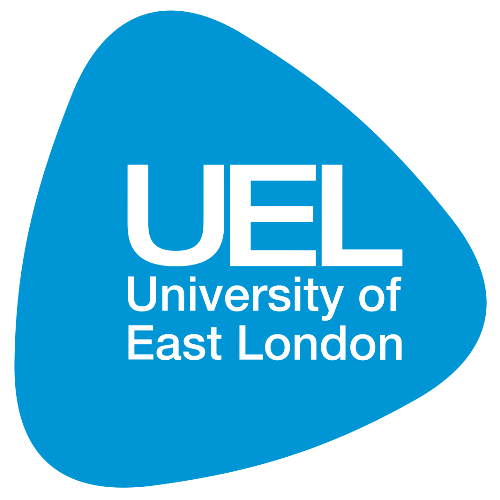







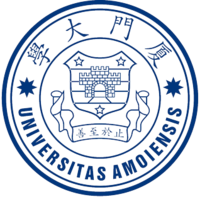

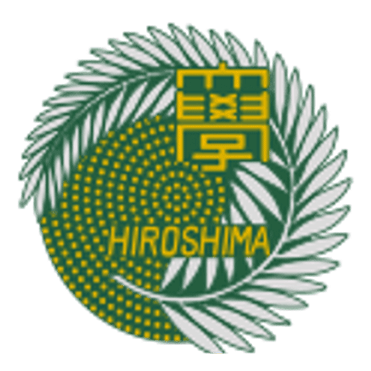
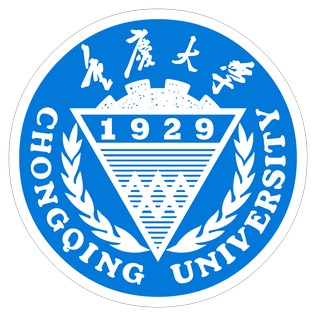
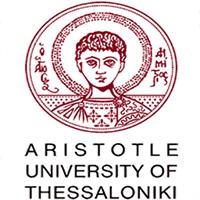
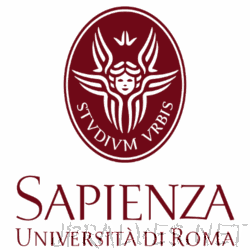
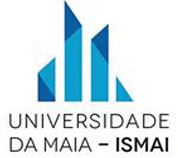


Hisham Hussein
Conference Coordinator
[email protected]
(+20) 3 5763827 | (+20) 3 5763828
(+20)1093188470
IEREK is an official partner of IFGICT membership number AG05082Z18

Prof. Arch. Luca Lanini
Full Professor, PhD
Professor at DESTeC of the University of Pisa in Architectural and Urban Design. Ph.D. President of the Master degree in Building Engineering-Architecture of the University of Pisa.
Subscribe to our newsletter
Join IEREK community